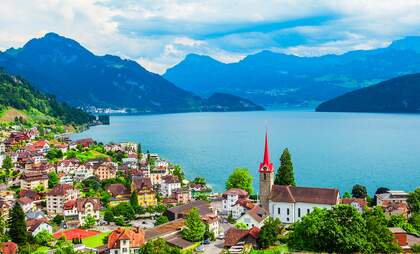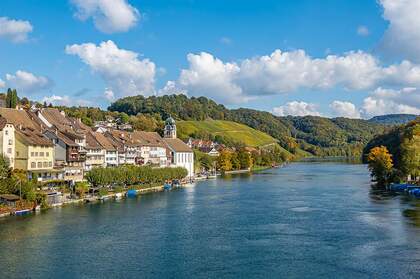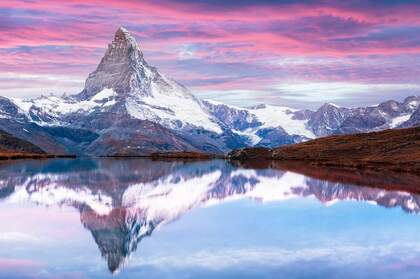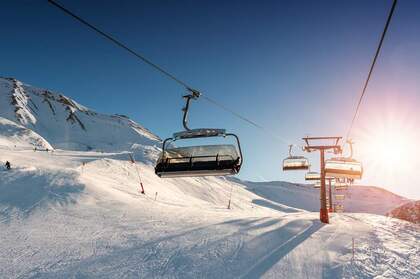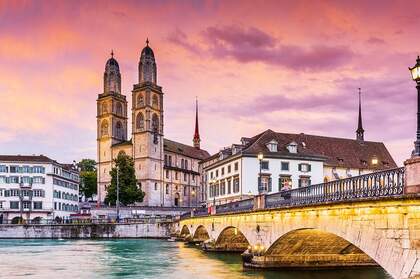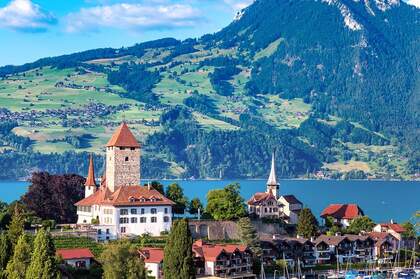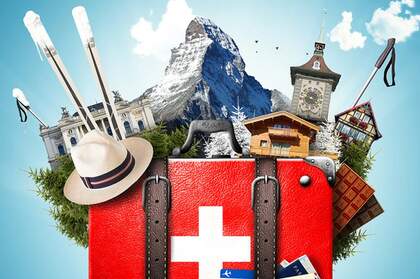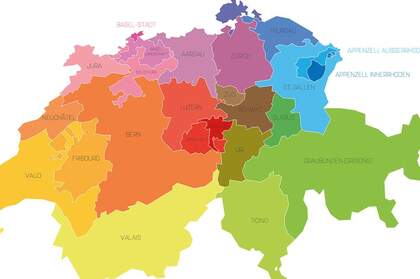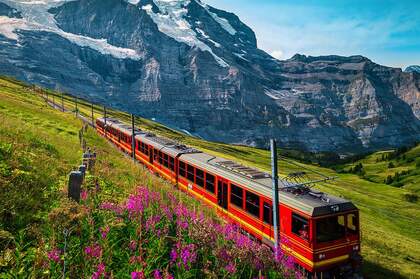Switzerland may be a landlocked country, but it is exceptionally rich when it comes to freshwater rivers and lakes. Whether you’re looking to spend a sunny summers day at a beach, or want to hike and explore the local scenery, the lakes of Switzerland offer a number of fun activities for locals, expats, families and people on holiday.
The lakes and rivers of Switzerland
Lakes and rivers cover approximately four percent of Switzerland’s surface area. The relatively small country has around 1.500 lakes fed by thousands of small streams and larger rivers. Keeping this in mind, it’s perhaps unsurprising that over six percent of Europe’s freshwater reserves can be found in Switzerland.
Lakes in Switzerland are fed by excess rainwater, spring water, and runoff from snow and glacier melt. For the majority of lakes, the water quality is so good that virtually all of them are clean enough to swim in.
The biggest lakes in Switzerland
Did you know that Switzerland was home to the largest freshwater lake in central Europe? Here’s a quick look at the biggest lakes in Switzerland.
Lake Geneva
Lake Geneva is the largest lake in Switzerland (although it also crosses the border into France). It is the largest freshwater lake in central Europe. Named “Large Water” - or Lem An - by the Celts, the lake is known as Lac Léman in French to this day.
The crescent-shaped lake measures 582 km2, and is located in the southwestern part of the country. The lake has the cities of Lausanne, Montreux, and, as the name suggests, Geneva on its banks. If you visit any of the three cities you’ll enjoy a gorgeous view of the lake and mountains. Lake Geneva is also home to one of Geneva’s most famous landmarks, the Jet d'Eau; a large water fountain and a key symbol for the city.
Lake Neuchatel
While Lake Geneva may claim to be the largest lake in Switzerland, Lake Neuchatel is actually the largest lake wholly on Swiss territory, measuring 218 km2.
Lake Neuchatel can be found in western Switzerland, between Bern and the French border. The lake is at the southern foot of the Jura mountains and is connected to two significantly smaller lakes (Lake Biel and Lake Murten). The northern and southern shores of Lake Neuchatel offer extremely different environments; extensive vineyards can be found on the northern shore, meanwhile, a bird paradise and Switzerland’s largest marshland can be found to the south, La Grande Cariçaie.
From Constance to Maggiore: Other Swiss lakes
Here’s a brief overview of some of the other most popular lakes in Switzerland.
Lake Constance (Bodensee)
Lake Constance - or the Bodensee - can be found in the northeastern tip of Switzerland. The lake crosses into both Germany and Austria. The lake is made up of two parts, the Obersee, also known as Upper Lake Constance, and the Untersee, which is known as Lower Lake Constance, the latter being only 62 km2 compared to the Obersee’s 472 km2.
The German town of Konstanz, Baden-Württemberg, lies in the middle of the two lakes. Along the lake’s Swiss shore are a number of quaint historic towns, and crossing the border into Germany will present you with a UNESCO-World-Heritage-listed monastery and Mainau Island botanical sanctuary.
Blausee
The Blausee is significantly smaller than other notable Swiss lakes, however, it remains immensely popular thanks to its deep blue waters and magical reputation. According to legend, a beautiful maiden with deep blue eyes who died of a broken heart lives on forever in the blue waters of the Blausee.
Technically, the deep blue waters actually come from subterranean springs, but it does not take from the romance of the location. The lake is situated in the middle of a small nature park in the Kander Valley in southern Switzerland in Canton Bern.
Lake Lucerne
The unusually shaped Vierwaldstättersee, or Lake Lucerne for those not yet confident in German, is situated in the heart of Switzerland, surrounded by a number of Swiss mountains popular among tourists and locals alike, such as Pilatus and Rigi.
The lake’s German name has its origins in the four historic Swiss cantons (Waldstätten) that surround it: Uri, Schwyz, Unterwalden (now Obwalden and Nidwalden), and Lucerne. The founding document for the old Swiss Confederacy was laid at Rütli, a meadow on the banks of the lake.
Lake Zurich
Also known as Zürichsee, Lake Zurich is another crescent-shaped lake that can be found in the northern part of Switzerland. It is bordered by the Albis and Zimmerberg hills to the south, and the Pfannenstiel hills to the north, with Switzerland’s largest city, Zurich, resting at the lake’s northernmost tip.
Lake Zurich is also where you’ll find Switzerland’s so-called Goldcoast, a wealthy region known for its low taxation, high property prices, and late evening sunshine. There are also a number of swimming areas and vineyards in the region.
Lake Maggiore
Lake Maggiore is the southernmost Swiss lake, crossing the border into northern Italy. The lake enjoys a mild climate and a Mediterranean-style landscape. This part of Switzerland receives approximately 2.300 hours of sunshine a year and has an average annual temperature of 15 degrees.
Only the northern tip of the lake actually lies in Switzerland, and along its shores lie some of the most popular and well-known holiday resorts in the country. Lake-side town Brissago, which can be found less than five kilometres from the Italian border, is at the lowest point in Switzerland, only 197 metres above sea level.
Visit the 1.500 lakes of Switzerland
Whichever Swiss lake you choose to visit, you’ll be blessed with gorgeous views and stunning scenery. With over 1.500 to choose from, Switzerland offers a little bit of something for everyone.

